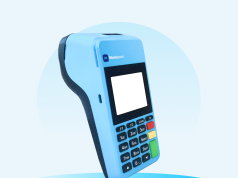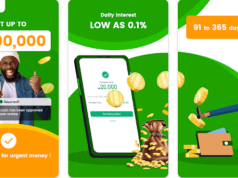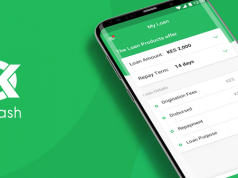It can be a nightmare when you start receiving messages from loan apps that you never even downloaded. Not only is it an invasion of privacy, but these messages can also be threatening and alarming, especially when they are sent to your contacts as well.
Unfortunately, this has become a common issue for many individuals who have been victimized by unscrupulous loan apps. If you’re in a similar situation, it’s important to know what steps you can take to protect yourself and your loved ones. In this blog post, we’ll discuss what you can do when loan apps send messages to your contacts and still threaten you and them.
Why Loans Might Be Threatening You And Your Contacts
Loan apps might be threatening you and your contacts for several reasons. Here are some possibilities:
- Privacy breaches: Some loan apps may gain access to your contact list through intrusive permissions or data breaches. This enables them to send messages to your contacts, posing a threat to both you and your friends or family.
- Coercion tactics: Loan apps often use aggressive tactics to pressure borrowers into repayment. They might threaten to expose your debt situation to your contacts as a way to shame or manipulate you into paying back the loan immediately.
- Collection strategies: To increase the chances of loan repayment, some apps resort to contacting borrowers’ contacts to apply pressure. By involving your contacts, they hope to leverage social pressure and embarrassment to prompt repayment.
- Unethical practices: Unfortunately, some loan apps operate without proper regulations or ethical standards.
They may engage in predatory lending practices and resort to threats to maximize their profits.
What to do when Loans Apps Send Messages to Your Contacts and Still Threaten You and Them
If you find yourself in an unfortunate situation where loan apps are sending messages to your contacts and threatening you and your loved ones, there are steps you can take to protect yourself. Here’s what you should do:
- Report the app: Contact your local authorities or consumer protection agencies to report the loan app and their threatening behavior. Provide them with any evidence, such as screenshots or message records, that can support your case.
- Block and delete: Block the loan app’s number or contact and delete any messages or emails from them. This will help reduce the amount of communication you receive from them and limit their ability to reach out to your contacts.
- Inform your contacts: Reach out to your contacts and let them know about the situation. Warn them not to engage with any messages or calls from the loan app and to block them if necessary. This will prevent your contacts from becoming victims as well.
- Secure your information: Change passwords for your bank accounts, social media profiles, and any other platforms that may have been compromised by the loan app. Enable two-factor authentication for added security.
- Educate yourself: Learn about your rights as a borrower and familiarize yourself with responsible lending practices.
This knowledge can help you make informed decisions in the future and avoid falling prey to predatory loan apps.
Prevention Tips to Avoid Becoming a Target of Loan App Scams
Loan app scams are on the rise, and it’s essential to protect yourself from becoming a target. Here are some prevention tips to help you avoid falling victim to these scams:
- Research the app: Before downloading any loan app, do thorough research. Read reviews, check the app’s reputation, and verify its legitimacy. Look for any red flags such as negative reviews or reports of fraudulent behavior.
- Be cautious with permissions: When installing a loan app, pay close attention to the permissions it requests. Only grant the necessary permissions, and if the app asks for access to your contacts, think twice before granting it.
- Read the fine print: Before agreeing to any loan terms, read the fine print carefully. Make sure you understand all the terms and conditions, including the interest rates, fees, and repayment terms. If anything seems suspicious or unclear, seek clarification before proceeding.
- Use reputable lenders: Stick to well-known and reputable lenders when borrowing money. Research and choose lenders that are licensed and regulated by appropriate authorities. Avoid dealing with unfamiliar or unregulated loan apps.
- Protect your personal information: Be cautious about sharing your personal information. Avoid providing sensitive data, such as your social security number or bank account details, unless you are confident in the app’s security measures.
- Stay vigilant: Regularly monitor your financial accounts and credit reports for any suspicious activity. Report any unauthorized transactions immediately to your bank or credit card company.
- Educate yourself: Stay informed about the latest scams and tactics used by loan app scammers.
Be aware of common warning signs and learn how to spot potential fraudulent activity.
Read Also: How to Upgrade Access Bank Account Easily (Online & Offline)
FAQS
How do I delete contacts from a loan app?
- To delete contacts from a loan app, you typically need to follow these steps:
- Open the app and go to your profile or settings.
- Look for an option related to “contacts” or “references.”
- Select the contacts you want to remove and follow the app’s instructions to delete them.
How do I remove my information from a loan app?
- To remove your information from a loan app, you can typically:
- Contact the app’s customer support and request the removal of your account and personal information.
- Uninstall the app from your device.
- Revoke permissions for the app to access your contacts, messages, and other sensitive data in your device settings.
How to deal with loan app harassment in Nigeria?
- If you are facing harassment from a loan app, consider these steps:
- Document the harassment, including call logs, messages, and any interactions.
- Contact the loan app’s customer support and express your concerns.
- If the harassment continues, report the issue to the relevant regulatory authority or consumer protection agency in Nigeria.
- You may also want to seek legal advice if necessary.
Can a loan app access my contacts after uninstalling the app?
- Uninstalling a loan app should revoke its access to your contacts and other device permissions. However, to ensure your privacy, you can review and adjust app permissions in your device settings.
How do I stop loan messages?
To stop receiving messages from loan apps, you can:
- Contact the loan app’s customer support and request to be removed from their contact list.
- Block the app’s number or email address in your messaging or email application.
- Adjust your notification settings to prevent messages from specific apps.
It’s important to be aware of your rights as a borrower and to manage your information and contacts carefully when using loan apps.
Conclusion
In conclusion, dealing with loan apps that send messages to your contacts and threaten you and your loved ones can be a distressing experience. However, it’s crucial to remember that you are not alone in this situation. By taking the right steps and seeking support, you can protect yourself and your contacts from further harm.
Education is key in preventing future incidents. Learning about responsible lending practices and understanding your rights as a borrower will empower you to make informed decisions. Researching loan apps before downloading, being cautious with permissions, and using reputable lenders are all prevention tips to avoid falling victim to loan app scams.






